#peter iii of aragon
Explore tagged Tumblr posts
Text

The Sicilian Vespers.Art by Francesco Hayez.
March 30th is the day that the Sicilian Vespers,a successful rebellion that against the rule of the French-born king Charles I of Anjou,incident broke out on the island of Sicily at the Easter 1282.The event takes its name from an insurrection which began at the start of Vespers at the Church of the Holy Spirit just outside Palermo,but the reason that started the rebellion are not clearly for certain.Anyway,the riot is said to have occurred when the bell were rung to announce the beginning of Vespers,so the event became known as the Sicilian Vespers.It is estimated that 2,000-4,000 French were killed in Sicily as a result of that event at the night,and approximately 13,000 more were slain or expelled by the rebels within six weeks.The Sicilian Vespers caused the government of Charle to lose control of the island and the Sicilians offered their throne to Peter III of Aragon,which led to the conflict expanding into the War of Sicilian Vespers.
Also,March 30th is also the Mafia Day of Japan.The slogan of Sicilian Vespers,"Morte alla Francia Italia anela"(the death to France is the Italy longs for),can be rearranged to form the initials "Mafia",which is said to be the origin of the name of the criminal organization in Sicily.
#Sicilian Vespers#Vespiri siciliani#Francesco Hayez#March 30th#Peter III of Aragon#the War of Sicilian Vespers#Sicily history#Italy history#the Mafia Day#マフィアの日
0 notes
Text

Mariano Barbasán Lagueruela (Spanish, 1864–1924) Pedro III el Grande en el collado de las Panizas, 1891 Diputación Provincial de Zaragoza The Battle of the Col de Panissars was fought on 30 September and 1 October 1285 between the forces of Philip III of France and Peter III of Aragon. It was a severe defeat for the French, who were already retiring over the Pyrenees when the Aragonese fell on them.
#Mariano Barbasán Lagueruela#spanish art#spanish#spain#pedro iii el grande en el collado de las panizas#1891#1800s#art#fine art#european art#classical art#europe#european#fine arts#oil painting#europa#mediterranean#history#painting
25 notes
·
View notes
Text
im a wolf-demon-salamander-grey treefrog-katydid-cricket-luna moth-klingon-trad vampire-cat-romulan-harry potter wizard-gnome-drow-orc-wood elf-high elf-werewolf-twilight vampire-chihuahua-android-bard-druid-sorcerer-d&d wizard-lotr wizard-mind flayer-kraken-owlbear-genetically modified human-andes mint-harry potter merperson-h20 mermaid-great white shark-raven named nevermore-amontillado-sewer clown-animatronic-ink person-reality bender-ringwraith-chicken-fairy-telescreen-multibear-manic pixie dream girl-d class-horcrux-dragon-unicorn-pegasus-among us crewmate-among us imposter-game master-sharpie king size marker-dwarf-dragonborn-toothbrush-rock-paper-scissors-lizard-vulcan-politician-god-phone guy-icebreakers ice cubes pineapple-a doctor not a miracle worker-troll-ent-poodle-rabbit-Bear.-orange zombie-purple zombie-green zombie-professor plum-col. mustard-in the library-with a knife-hoola dancer-fish-villager-pelecan-defense against the dark arts professer-mafia boss-peep rabbit-peep chicken-gymnast-hairbrush-philosopher-music freak-school teacher-kidnapper-police lieutenant-farmer-trash can-dumpster out back-turtle-tribble-my little pony-kratt brother-high diver-pearl diver, dive, dive, deeper-chef-fire-earth-water-wind-wasp-bee-hornet-yellowjacket-mud dabber-grasshopper-rattlesnake-armadillo-cowboy-flashlight-starfleet science officer-harlet-elephant-gater-muppet-emo-goth-preppy-teabag-loser-sucker-mouse-rat-a puppet-a pauper-a pirate-a poet-a pawn-and a king-father albert-the pope-a nun-pastor jeff-gambler-metalhead-death rocker-the grim reaper-angel-lighthouse-paw patrol dog-hobbit-starfish-sponge-crab-squid-shrimp-jellyfish-chipmunk-hammerhead shark-nurse shark-humpback whale-blue whale-orca-sexual harrassment panda-south park character-jakoffasaurus-scrabble board-ouija board-pillow-toilet paper-period pad-tampon-baby diaper-elderly diaper-martian-touch tone telephone-starfleet operations-starfleet command-kirk-spock-bones-sulu-chekov-uhura-scotty-yeoman rand-KHAN!!!-mudd-the uss enterprise-the uss reliant-botany bay-v'ger-valeris-saavik-sybok-surak-sarek-the abbreviation 'idk'-sheldon-leonard-penny-howard-raj-amy-bernadette-mary cooper-george sr-george jr-missy cooper-meemaw-tam-dr sturgis-dr linkletter-dr jack bright-dr clef-dr gears-dr kondraki-dr mann-dr iceberg-dr crow-dr rights-dr sherman-scp 049-scp 3008-scp 4231-scp 166-scp 682-scp 2521-scp 590-O5 6-bill cipher-stanley pines-stanford pines-dipper-mabel-wendy-soos-schmebulok-gideon-mcgucket-dipper goes to taco bell-sheriff blubs-deputy durland-tad strange-andy taylor-william afton-michael afton-elizabeth afton-crying child-henry emily-charlotte emily-dave miller-jack kennedy-dee kennedy-peter kennedy-steven stevenson-aragorn-sam-frodo-merry-pippin-boromir-legolas-gimli-gandalf-faramir-denethor-sauron-elrond-thranduil-harry-hermione-ron-voldemort-pettigrew.-moony-padfoot-prongs-snape-edward-bella-alice!!-carlisle-charlie-cthulhu-greg heffley-pennywise-bendy-sammy-norman-jack-alice (susie)-allison-henry stien-joey drew-bruenor battlehammer-raskolnikov-heather-heather-heather-veronica-jd-kurt-ram-martha-kurt cobain-david bowie-freddie mercury-hozier-mitski-lemon demon-jack stauber-tally hall-hamilton-burr-jefferson-madison-washington-phillip-angelica-eliza-peggy-king george iii-king henry viii-ben franklin-catherine of aragon-anne boleyn-jane seymour-anne of cleves-katherine howard-catherine parr-dracula-𝓯𝓻𝓮𝓪𝓴𝔂-evan hansen-conner murphey-john adams-raymond barron-fred randall-jane doe-ocean-noel-mischa-constance-ricky-karnak-vergil-alternate-thatcher davis-ruth-dave-cesar-mark-adam-sarah-jonah-evelyn-gabriel-trump-biden-sunny-basil-kel-aubrey-hero-mari-vanessa (the mean girl that kinda likes u)-tux the linux penguin-perry the platypus hybrid princess...dont fw me
#this took an hour#lord of the rings#lotr#star trek tos#star trek#harry potter#marauders era#gravity falls#dipper goes to taco bell#heathers#hamilton#1776 musical#dear evan hansen#the hobbit#six the musical#ride the cyclone#fnaf#dsaf#inanimate object#i forgor#scp#scp foundation#everybody loves raymond#the big bang theory#young sheldon#howard your froot loops are getting cold!#denethor hate club fuck that guy#other fandoms#dungeons and dragons#d&d
70 notes
·
View notes
Text

Monthly Members' Fics — Aug 2024
A Snake With Blue Eyes by Tentaculiferous (America/England, Canada/England, America & Canda) While Arthur is thrilled that the King of Spades has been discovered, the King himself takes less joy in being found. Alfred was happy with his life as a commoner. Maybe he hadn't had fancy clothes or even his own bedroom, but he'd had freedom. He could go where he wanted, do what he wanted, live the kind of life he wanted. Now he's supposed to waste his days sitting on a throne being the Queen's good little boytoy. Fuck that.
Strange Magic by Tentaculiferous (America/Canada/England) With the threat from the Kingdom of Clubs looming, the King, Queen, and Ace of Spades resort to an old magic ritual to save their people. But the price for their kingdom's safety may turn out to be more than Amelia and Matthew are willing to pay. (Or, Amelia, Matthew, and Rose fuck for the good of the kingdom.)
Trick Cards by Tentaculiferous (America/England, Canada/England) After a heated disagreement between King Alfred and Queen Arthur, the queen decides to end things once and for all. But Arthur isn't the only one in the castle with a trick up his sleeve, and he may be the one playing the fool in the end.
Synchronicity by proosh (France/Prussia) Francis' pre-rut rolls around and it triggers something awful and unknown within Gilbert.
The Hidden Spade — Chapter 1: The Princess and the Prologue by Actually_a_horse (America/England) When Alfred finds he has the mark of the Queen of Spades, he knows he will be forced into royalty and the feminine role of Queen—dresses and all. There is no way Alfred can allow himself to be found out, not when his freedom and identity are on the line. The universe seems to have other plans for him, however. Can Alfred keep his secret? Or is fate too strong to allow a Queen to not take her throne? (UKUS, rating may change with future chapters)
acuerdo by southerngothics (South Italy/Spain) It’s still new to him; four months is an eternity for humans, perhaps, but perspective has shortened and condensed time into a coiled thing, folding over on itself until the entire stretch of it is thin as parchment. Four months is the blink of an eye. And the fighting has not stopped since he set foot upon that little island kingdom; he hasn’t had time to truly process it all. That Romano is his now. That they are together. That every morning he will wake up and Romano will be here, and that every night Romano will be asleep in this bed. It still seems like the far-fetched dream Pedro had cooked up in hushed tones, away from the menacing glares of el Papa. Spain is convinced, somehow, that if he blinks, reality will throw its punch and he’ll be back in Palermo, crushed under that damned France’s boot. In 1282, King Peter III of Aragon is crowned King of Sicily.
s'unifier by southerngothics (America/Canada) This does nothing, it seems, to deter Canada. Instead, he only burrows his head into America’s chest and snuggles closer, and it’s almost too nostalgic for him, dragging up memories that are still fresh, haphazardly stitched-up wounds. The colonial days are hemorrhaging within him and for a moment it’s hard to think clearly, sunny days mixing with gunpowder in a disorienting flat circle of history. He wonders if it gets easier or harder as time goes on. In the early 1850s, multiple American annexation movements take root in Canada.
Teach My Heart to Bend Instead of Breaking by Tentaculiferous (Canada/England) Matthew Williams is an unusual student, a diamond shining brightly amid a sea of clods. That’s how Arthur Kirkland, his history professor sees him. Arthur’s only intention in taking Matthew under his wing is to nurture a rare talent, but it’s possible to become too close to a student. Already on thin ice with his wife and the university due to his prickly personality, getting entangled with Matthew might be what finally deals the deathblow to his marriage—and worse, his career.
Felidae by Mossy_man (Russia/Turkey) Ivan gets cat ears and pussy. Sadik gets two cocks. That's it, that's the plot.
(Prussian) Dad Baby by ChibiDashie (Austria, Germany, Prussia, OC) Based on and inspired by the Bluey Episode "Dad Baby" While Prussia was helping clean Mary's bedroom, Mary finds a mysterious object stored in her closet that came from her own mother and father. Even as Prussia demonstrated how this object worked, this gave Mary an idea to play a silly game! Hilarity and shenanigans ensue between Mary and Prussia during this funny game. aka Prussia learns how it feels to be pregnant and suffer
#axis powers hetalia#hetalia world stars#hetalia#aph fanfiction#hws fanfiction#hetalia fanfiction#hetalia writers' association#post: monthly fic round-up#august 2024
17 notes
·
View notes
Note
okay so i'm more neutral for factkin. i don't fully understand it, and honestly it just feels kinda... creepy? to me?
the idea of someone being kin with me just makes me feel very uncomfortable. but i understand that factkin is involuntary, just like fiction and alterhuman as a whole, so i certainly dont go around harassing them and shi.
but i'd like to understand factkin more. why do i only see factkin of famous people? how does factkin work? do you believe you were this person in a past life, or do you believe you are them right now?
and if you dont mind, can you explain your own experience?
Hello! Thank you for your patience. I wanted to answer this thoughtfully so it took several days.
This is a really *really* good question with a lot of layers so I'm gonna tackle it in stages! This got long so I put it under a cut.
First of all, I'd like to talk about your first statement. "the idea of someone being kin with me just makes me feel very uncomfortable." You are allowed to feel uncomfortable! Your feelings are valid and discomfort is an entirely neutral feeling. It is even *good* to feel uncomfortable sometimes because when you feel uncomfortable you are given a chance to question why.
I applaud you for not allowing your discomfort to interfere with the way you treat people. It is a very mature thing to say "this makes me uncomfortable but live and let live." The good news is, you will likely never have to worry about someone being you-kin! "Why do I only see factkin of famous people?" is a VERY common question and it has a pretty simple answer: survivorship bias.
Take, for example, a wolf therian. Wolves are a very well-known animal and there are lots of ways to know you feel like a wolf that the average person would just already know. Now, take a Vulturine Guineafowl. You might be asking "wtf is a Vulturine Guineafowl?" There are almost certainly more awakened wolf therians than there are Vulturine Guineafowl therians out there. Why? Because when you know something very well and have an awareness of the thing it becomes much easier to know if you are it or if you are not it. More people have an awareness of John Lennon than of John who lives down the road. Therefore, more people will identify as John Lennon than will identify as John who lives down the road.
(Side note!! Factkin are NOT by any means always celebrities! I have met people who factkin their pets. I have met people who factkin unknown people depicted in drawings from the middle ages. You just see celebrities more for the reason above.)
How do factkin work? The same as any other type of otherkin! I used therians in my first example, so I will use fictionkin for this one. Some fictionkin believe they were their kintypes in a past life. Some fictionkin, even those who died in canon, believe they are their kintype right now in a parallel life. Some fictionkin identify as fictionkin for entirely non-spiritual reasons. In the same vein, some factkin identify as their kintypes because they believe they were them in a past life. Some identify as them for completely separate reasons.
The "why" of being otherkin is as varied as any other aspect of the otherkin experience and that rings true for *any* kind of otherkinity.
I speak best when speaking from my own experience so I'm very grateful you've given me a chance to. I am a spiritual otherkin and I believe that my kintypes come from parallel lives. To make it simple: I believe there are infinite universes with infinite possibilities and that the mes some of those universes are connected to the me in this one.
I believe that in a parallel life I am René Descartes. I am Eminem. I am Peter III of Aragon, and I identify as them in this life because I feel like them the same way I feel like a wolf or a goat (some of my other kintypes.) It feels right to be called by their names. Sometimes, I have dreams or just nagging funny feelings that I count as memories. I have laughed out loud in history classes before because of the way my professor talked about Caesarion. Likewise I have had my stomach turn while listening to people eviscerate Edgar Allan Poe. I miss my wife, Constance II of Sicily, every time I see a picture of her, and I feel embarrassed when I listen to some of Eminem's latest songs.
I can't give any sort of empirical proof for this belief; I study philosophy so that I can learn what that proof might even look like, so for now all I can tell you is how I feel. I am very much open to talking more about this.
I hope this helped! I know it was long. Thank you for your question as it means a lot to me to hear from factkin-skeptical folks. Thank you for reading. Have a nice week!
If you like my blog, consider doing a daily click for Palestine!
8 notes
·
View notes
Text
SAINT OF THE DAY (January 7)

Saint Raymond of Penafort, a Dominican priest who worked to aid Christian captives during the era of the Crusades and also helped organize the Church’s legal code, will be celebrated liturgically on January 7.
A contemporary of Saint Thomas Aquinas, he inspired the theologian to write the “Summa Contra Gentiles” for the conversion of non-Catholics.
At least 10,000 Muslims reportedly converted as a result of St. Raymond’s evangelistic labors.
Descended from a noble family with ties to the royal house of Aragon, Raymond of Penafort was born during 1175 in the Catalonian region of modern-day Spain near Barcelona.
He advanced quickly in his studies, showing such a gift for philosophy that he was appointed to teach the subject in Barcelona by age 20.
As a teacher, the young man worked to harmonize reason with the profession and practice of Catholic faith and morals.
This included a notable concern for the poor and suffering.
Around the age of 30, the Spanish scholar went to study secular and Church law at Bologna in Italy.
He earned his doctorate and taught there until 1219, when the Bishop of Barcelona gave him an official position in the diocese.
During 1222, the 47-year-old Raymond joined the Dominican Order in which he would spend the next 53 years of his remarkably long life.
As a penance for the intellectual pride he had once demonstrated, the former professor was asked to write a manual of moral theology for use by confessors.
The resulting “Summa Casuum” was the first of his pioneering contributions to the Church.
Meanwhile, in keeping with his order’s dedication to preaching, the Dominican priest strove to spread the faith and bring back lapsed and lost members of the Church.
During his time in Barcelona, Raymond helped Saint Peter Nolasco and King James of Aragon to establish the Order of Our Lady of Mercy, whose members sought to ransom those taken captive in Muslim territory.
During this same period, Raymond promoted the Crusades through preaching, encouraging the faithful to defend their civilization from foreign threats.
Pope Gregory IX called the Dominican priest to Rome in 1230, asking him to compile the Church’s various decisions and decrees into one systematic and uniform collection.
The resulting five books served for centuries as a basis of the Church’s internal legal system.
Raymond was the Pope’s personal confessor and close adviser during this time, and nearly became the Archbishop of Tarragona in 1235.
But the Dominican did not want to lead the archdiocese and is said to have turned down the appointment.
Later in the decade, Raymond was chosen to lead the Dominicans, though he did so for only two years due to his advancing age.
Ironically, however, he would live on for more than three decades after resigning from this post.
During this time, he was able to focus on the fundamentals of his vocation: praising God in prayer, making him known through preaching, and making his blessings manifest in the world.
Raymond’s later achievements included the establishment of language schools to aid in the evangelization of non-Christians.
Raymond of Penafort’s long pilgrimage of faith ended on 6 January 1275, approximately 100 years after his birth.
He was beatified by Pope Paul III in 1542. Pope Clement VIII canonized him on 29 April 1601.
His patronage extends toward lawyers in general and canon lawyers in particular.
6 notes
·
View notes
Text
JOHN FISHER
JOHN FISHER
c. 19 October 1469 – 22 June 1535
John Fisher was an English Catholic bishop and cardinal.
King Henry VIII of England had attempted to have his marriage to Catherine of Aragon annulled and Fisher was the queen’s main supporter
Fisher refused to acknowledge Henry VIII as supreme head of the Church of England as well as upholding the Catholic Church’s doctrine of papal supremacy.
He was canonized by Pope Piux XI. In 1935, Pope Paul III created Fisher a Cardinal Priest in the hope of Henry VIII to go easy on Fisher, this made Henry VIII even more angry. Fisher’s trial took place in Westminster Hall, at the court was treated like any other commoner, those at his trial included Thomas Cromwell and Thomas Boleyn, the father of Henry VIII’s lover, Anne Boleyn. Fisher was found guilty of treason, for denying that Henry VIII was head of the church. He was found guilty and condemned to be hanged, drawn and quartered at Tyburn. Fisher gained public sympathy and support, due to public pressure, Henry VIII changed the sentence to beheading.
Fisher was executed on Tower Hill on 22 June 1535. He went to his death calmly and with courage, which impressed those present. His body was left on the scaffold until that evening, on Henry VIII’s orders. His body was then taken and placed on a pike and then thrown naked into a grave in the churchyard of All Hallow’s Barking. He was given no funeral. A fortnight later, his body was laid beside that of Thomas More in the chapel of St Peter ad Vincula within the Tower of London (where Anne Boleyn’s body was laid to rest). His head was stuck upon a pole on the London Bridge, it gained so much attention by the public that it was thrown into the Thames. They afterwards put Thomas More’s head onto the same pole, who was executed on 6 July.
John Fisher, Bishop of Rochester, was also opposed to Henry’s religious policies. Henry VIII had several monks executed. Initially, Henry VIII and Thomas Cromwell believed that John Fisher and Thomas More would change their minds to save themselves. Fisher was open about his views; however, More was careful to avoid confrontation and remained silent on the subject.

#johnfisher#HenryVIII#englishreformation
2 notes
·
View notes
Text
Events 10.18 (before 1900)
33 – Heartbroken by the deaths of her sons Nero and Drusus, and banished to the island of Pandateria by Tiberius, Agrippina the Elder dies of self-inflicted starvation. 320 – Pappus of Alexandria, Greek philosopher, observes an eclipse of the Sun and writes a commentary on The Great Astronomer (Almagest). 614 – King Chlothar II promulgates the Edict of Paris (Edictum Chlotacharii), a sort of Frankish Magna Carta that defends the rights of the Frankish nobles while it excludes Jews from all civil employment in the Frankish Kingdom. 629 – Dagobert I is crowned King of the Franks. 1009 – The Church of the Holy Sepulchre, a Christian church in Jerusalem, is completely destroyed by the Fatimid caliph Al-Hakim bi-Amr Allah, who hacks the Church's foundations down to bedrock. 1016 – The Danes defeat the English in the Battle of Assandun. 1081 – The Normans defeat the Byzantine Empire in the Battle of Dyrrhachium. 1281 – Pope Martin IV excommunicates King Peter III of Aragon for usurping the crown of Sicily (a sentence renewed on 7 May and 18 November 1282). 1356 – Basel earthquake, the most significant historic seismological event north of the Alps, destroys the town of Basel, Switzerland. 1540 – Spanish conquistador Hernando de Soto's forces destroy the fortified town of Mabila in present-day Alabama, killing Tuskaloosa. 1561 – In Japan the fourth Battle of Kawanakajima is fought between the forces of Uesugi Kenshin and Takeda Shingen, resulting in a draw. 1565 – Ships belonging to the Matsura clan of Japan fail to capture the Portuguese trading carrack in the Battle of Fukuda Bay, the first recorded naval battle between Japan and the West. 1597 – King Philip II of Spain sends his third and final armada against England, but it ends in failure due to storms. The remaining ships are captured or sunk by the English. 1599 – Michael the Brave, Prince of Wallachia, defeats the Army of Andrew Báthory in the Battle of Șelimbăr, leading to the first recorded unification of the Romanian people. 1630 – Frendraught Castle in Scotland, the home of James Crichton of Frendraught, burns down. 1648 – Boston shoemakers form the first American labor organization. 1748 – Signing of the Treaty of Aix-la-Chapelle ends the War of the Austrian Succession. 1775 – African-American poet Phillis Wheatley is freed from slavery. 1775 – American Revolutionary War: The Burning of Falmouth (now Portland, Maine). 1779 – American Revolutionary War: The Franco-American Siege of Savannah is lifted. 1797 – Treaty of Campo Formio is signed between France and Austria 1851 – Herman Melville's Moby-Dick is first published as The Whale by Richard Bentley of London. 1860 – The Second Opium War finally ends at the Convention of Peking with the ratification of the Treaty of Tientsin, an unequal treaty. 1867 – United States takes possession of Alaska after purchasing it from Russia for $7.2 million. Celebrated annually in the state as Alaska Day. 1898 – The United States takes possession of Puerto Rico from Spain. 1900 – Count Bernhard von Bülow becomes chancellor of Germany.
2 notes
·
View notes
Text
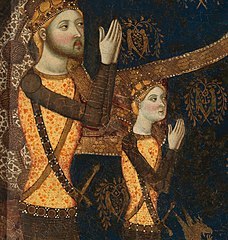

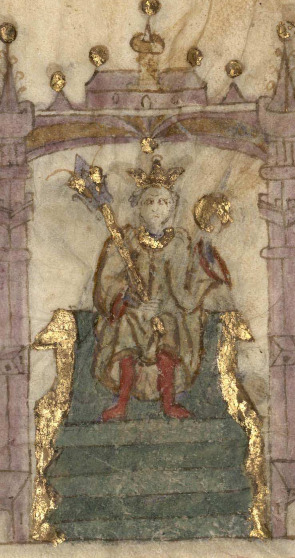
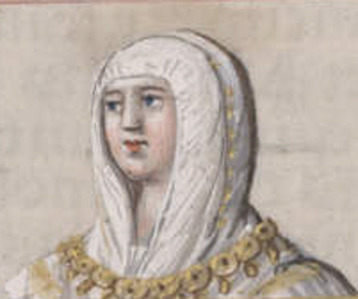
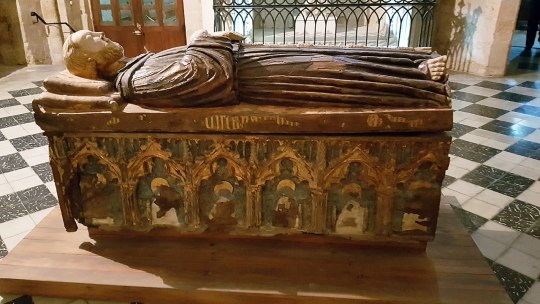
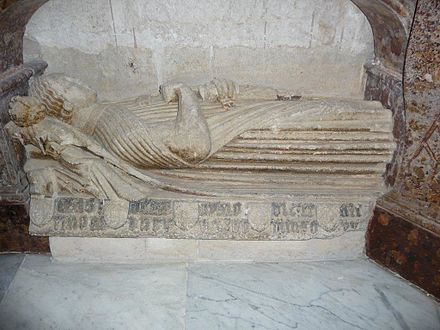

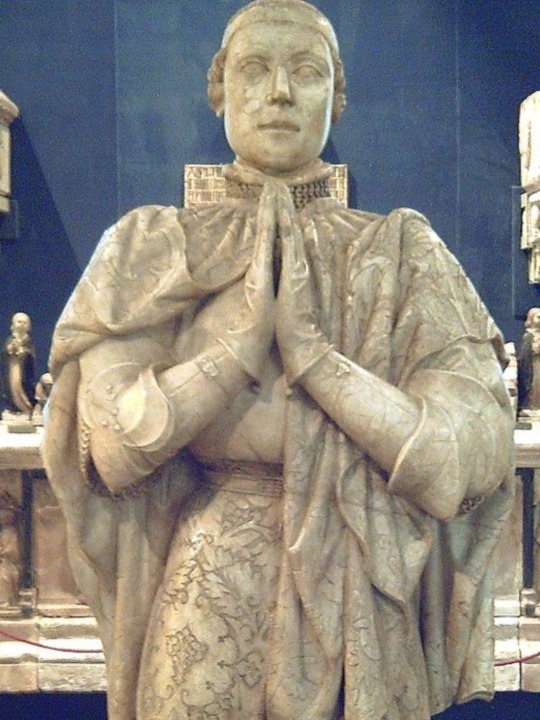
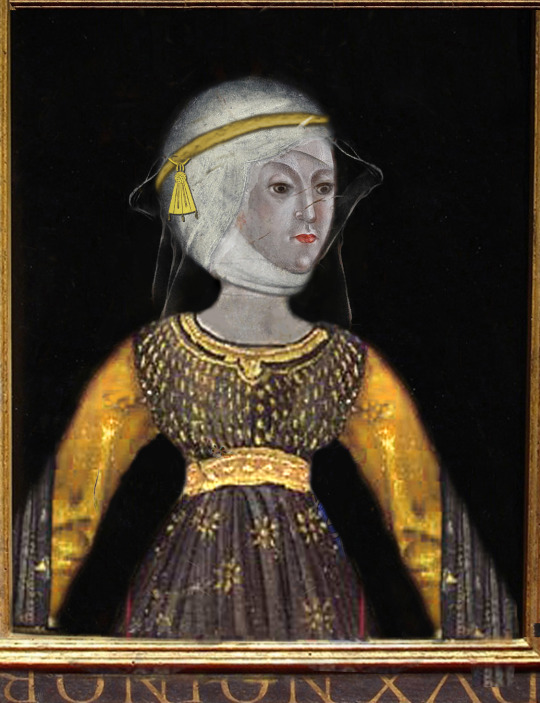
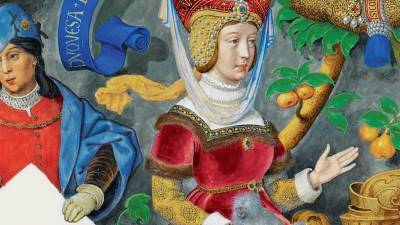
The Bastard Kings and their families
This is series of posts are complementary to this historical parallels post from the JON SNOW FORTNIGHT EVENT, and it's purpouse to discover the lives of medieval bastard kings, and the following posts are meant to collect portraits of those kings and their close relatives.
In many cases it's difficult to find contemporary art of their period, so some of the portrayals are subsequent.
1) Henry II of Castile ( 1334 – 1379), son of Alfonso XI of Castile and Leonor de Guzmán; and his son with Juana Manuel de Villena, John I of Castile (1358 – 1390)
2) His wife, Juana Manuel de Villena (1339 – 1381), daughter of Juan Manuel de Villena and his wife Blanca de la Cerda y Lara; with their daughter, Eleanor of Castile (1363 – 1415/1416)
3) His father, Alfonso XI of Castile (1311 – 1350), son of Ferdinand IV of Castile and his wife Constance of Portugal
4) His mother, Leonor de Guzmán y Ponce de León (1310–1351), daughter of Pedro N��ñez de Guzmán and his wife Beatriz Ponce de León
5) His brother, Tello Alfonso of Castile (1337–1370), son of Alfonso XI of Castile and Leonor de Guzmán
6) His brother, Sancho Alfonso of Castile (1343–1375), son of Alfonso XI of Castile and Leonor de Guzmán
7) Daughters in law:
I. Eleonor of Aragon (20 February 1358 – 13 August 1382), daughter of Peter IV of Aragon and his wife Eleanor of Sicily; John I of Castile's first wife
II. Beatrice of Portugal (1373 – c. 1420) daughter of Ferdinand I of Portugal and his wife Leonor Teles de Meneses; John I of Castile's second wife
Son in law:
III. Charles III of Navarre (1361 –1425), son of Charles II of Navarre and Joan of Valois; Eleanor of Castile's huband
8) His brother, Peter I of Castile (1334 – 1369), son of Alfonso XI of Castile and Mary of Portugal
9) His niece, Isabella of Castile (1355 – 1392), daughter of Peter I of Castile and María de Padilla
10) His niece, Constance of Castile (1354 – 1394), daughter of Peter I of Castile and María de Padilla
#jonsnowfortnightevent2023#henry ii of castile#john i of castile#juana manuel de villena#eleanor of castile#alfonso xi of castile#leonor de guzmán#tello alfonso of castile#sancho alfonso of castile#peter i of castile#constance of castile#isabella of castile#asoiaf#a song of ice and fire#day 10#echoes of the past#historical parallels#medieval bastard kings#bastard kings and their families#eleanor of aragon#beatrice of portugal#charles iii of navarre#canonjonsnow
18 notes
·
View notes
Text
Sophie Hélène Béatrix de France, Marie-Thérèse Charlotte de France,Élisabeth Louise Vigée Le Brun,Marie Antoinette with a Rose,Marie Antoinette,Louis XVI,Marie-Thérèse Charlotte,Louis Antoine of France, Duke of AngoulêmeLouis Joseph Xavier François,Louis XVII,Louis XVIII,Charles X,Maria Theresa of Savoy,Sophie d'Artois,Louis, Dauphin of France, Aubreigh Paige Wyatt, Ava Jordan Wood, Leiliana Wright, Star Hobson, Saffie-Rose Brenda Roussos, Lily Peters, Olivia Pratt Korbel, Elizabeth Shelley, Sara Sharif, Charlotte Figi, Jersey Dianne Bridgeman, Macie Hill, Sloan Mattingly, Audrii Cunningham, Athena Strand, Athena Brownfield, Leocadia Zorrilla, Francisco José de Goya y Lucientes, Josefa Bayeu, Francisco Javier Goya Bayeu,Charlotte Eckerman, Adolf Ulrik Wertmüller, La Belle Italienne, Mary Wollstonecraft Shelley, Anne Isabella Noel Byron, Elizabeth Cavendish, Duchess of Devonshire, Lady Elizabeth Finch-Hatton, Queen Elizabeth II, Barbara Shelley, Percy Shelley, Lady Elizabeth Pilfold Shelley, Anne Neville, John Winthrop, Mary Forth Winthrop, Margaret Tyndall Winthrop, Thomasine Winthrop, Elisabeth of Denmark, Anna von Brandenburg, Elisabeth von Brandenburg, Sir John Talbot, Elizabeth Wrottesley Talbot, Richard III, Edward of Middleham, Margaret Plantagenet, Anne Plantagenet Saint Leger, Elizabeth of York Plantagenet de la Pole Duchess of Suffolk, Edmund Plantagenet, Richard of York 3rd Duke of York, Lady Cecily de Neville Plantagenet, Katharine of Aragon, Henry Tudor, Elizabeth I, Isabella de Aragon, Juan de Aragón, Miguel da Paz, Prince of Asturias, Jacklyn Jaylen “Jackie” Cazares, Chief Thunder Cloud, Chief Yellow Thunder, Ernest White Thunder, Wa-Kin-Yan-Waste “Andrew” Good Thunder, Maggie Snana Brass,
4 notes
·
View notes
Text
Loyal brothers
The Capetian kings found their brothers no more difficult than their sons. The exceptions were the brothers of Henri I, Robert and Eudes, but thereafter the younger Capetians developed a tradition of loyalty to their elders. Robert of Dreux, the brother of Louis VII, who was the focus of a feudal revolt in 1149, was only a partial exception, for at that date the king was still in the East, and the real object of the hostility was the regent Suger. By contrast, Hugh of Vermandois was described by contemporaries as the coadjutor of his brother, Philip I. St Louis's brothers, Robert of Artois, Alphonse of Poitiers, and Charles of Anjou, never caused him any difficulties, and the same can be said of Peter of Alençon and Robert of Clermont in the reign of their brother Philip III. Even the disturbing Charles of Valois, with his designs on the crowns of Aragon and Constantinople, was always a faithful servant to his brother Philip the Fair, and to the latter's sons. The declaration which he made when on the point of invading Italy in the service of the Pope is revealing:
"As we propose to go to the aid of the Church of Rome and of our dear lord, the mighty prince Charles, by the grace of God King of Sicily, be it known to all men that, as soon as the necessities of the same Church and King shall be, with God's help, in such state that we may with safety leave them, we shall then return to our most dear lord and brother Philip, by the grace of God King of France, should he have need of us. And we promise loyally and in all good faith that we shall not undertake any expedition to Constantinople, unless it be at the desire and with the advice of our dear lord and brother. And should it happen that our dear lord and brother should go to war, or that he should have need of us for the service of his kingdom, we promise that we shall came to him, at his command, as speedily as may be possible, and in all fitting state, to do his will. In witness of which we have given these letters under our seal. Written at Saint-Ouen lès Saint-Denis, in the year of Grace one thousand and three hundred, on the Wednesday after Candlemas."
This absence of such sombre family tragedies as Shakespeare immortalised had a real importance. In a society always prone to anarchy the monarchy stood for a principle of order, even whilst its material and moral resources were still only slowly developing. Respectability and order in the royal family were prerequisites, if the dynasty was to establish itself securely.
Robert Fawtier - The Capetian Kings of France
#xii#xiii#xiv#robert fawtier#the capetian kings of france#henri i#robert i de bourgogne#louis vii#robert i de dreux#abbé suger#philippe i#hugues de vermandois#louis ix#robert i d'artois#alphonse de poitiers#charles i d'anjou#philippe iii#pierre d'alençon#robert de clermont#philippe iv#charles de valois
8 notes
·
View notes
Text

On this day - 23rd March 1369
Death of Peter 'The Cruel'
Great-great grandfather of Edward IV & Richard III
Move over Ivan the Terrible, Vlad the Impaler and Henry VIII.
Peter the Cruel of Castile will give you a run for your money.....
Nobody ever looks at their sweet newborn baby and thinks - some day this baby's nickname is going to be 'the cruel'.
However, with Peter, it wasn't surprising.
Peter's father was the King of Castile, Alfonso XI, who was a pretty iffy character himself!
Once Alfonso XI's wife María of Portugal gave birth to their son Peter, Alfonso shipped them both off to exile, far away from court.
After ditching his wife, Peter's father then continued living with his mistress, with whom he had another ten children!
When Peter was sixteen, his father died of the plague.
Peter was now King of Castile.
Peter started his reign by killing the supporters of his half brothers, from his father's mistress.
He also had his father’s mistress killed.
Basically if someone looked sideways at him, Peter had them killed....
From early in Peter’s reign, it became clear that the monarch had a suspicious, nasty and vindictive personality.
Peter used deceit and cruelty whenever he deemed it necessary.
His unforgiving nature, combined with a very long memory, made it very hazardous for anyone to cross him.
The aristocracy looked on in horror, as one of their own was eXecuted or assassinated.
Even the most terrible rulers need a queen....
Joan Plantagenet, the favourite daughter of Edward III of England, was Peter's chosen bride.
However, on the way to Castile, she travelled through a town infested with the plague, contracted the disease, and died.
Poor Joan, however, we can't help thinking that death was a lucky escape for her!
Peter then fell in love, awwww.
Against his ministers advice, Peter married María de Padilla.
However, his ministers convinced Peter to discard María, and marry Blanche of Bourbon instead.
Politically, the match with Blanche was ideal.
Blanche was the daughter of the Duke of Bourbon.
She would bring with her a much needed alliance with the French - plus she had a huge dowry!
Peter agreed to a change of bride, and on 3rd June 1353, he married fourteen year old Blanche of Bourbon.
Peter only spent two nights with Blanche, before he had her imprisoned in the castle of Arévalo.
Much like the situation with his parents, Peter immediately went back to María!
Peter went on to have poor Blanche murdered in 1361!!
Some say she was poisoned, or shot with a crossbow.
Whichever dark way she met her end, Blanche was just twenty-two years old!
After Blanche, Peter then went through a marriage, of sorts, with Juana de Castro.
When Peter and Juana were married, Juana was proclaimed Queen of Castile.
However after just two nights, true to form, Peter deserted her, and went back to María!
This guy really can't decide where to lay his hat!!
A period of turmoil then followed for Peter.
Instead of heroically fighting the Muslims of Granada, like his forefathers did - Pedro teamed up with them, and turned on the Aragonese.
From 1356 to 1366 Peter engaged in continued wars with Aragon.
In these. he showed neither any ability or daring.
It was during this period that he perpetrated the series of murders which would make him infamous.
In the midst of the war, Peter invited his half brother Fadrique, to dinner - and the dessert course was an axe to Fadrique's head!
The murder of his brother enraged Peter's other half-brother, Henry.
Henry allied with Aragons, who helped put Henry on the throne, ending the war with Castile
Henry had driven Peter from Castile by 1366.
However, Peter had one more trick up his sleeve.....
Peter struck a deal with Edward, the Black Prince of England.
The Hundred Years War spilled over to Spain as the English beat the French Castilian army at Najera, in 1367.
Edward, the Black Prince, then restored Peter to the Castilian throne.
However, the English alliance fell apart after Peter killed one of the prisoners in a fit of rage.
He also kept forgetting to pay his English allies.....
The wars dragged on, and through some double dealing Peter ended up in a tent with his half brother, Henry.
Cage fight 1369 was about to begin.....
Accounts differ as to what really happened inside the tent on 23rd March 1369.
One story says, Henry came into the tent demanding -
“Where is the son of a Jew whOre,
who calls himself king of Castile?”
Peter answers:
“You are the son of a whOre,
for I am the son of the good King Alfonso!!!”
It was handbags at dawn, as with their weapons at the ready, the brothers came out the tent, swinging.
Most accounts say Peter had the upper hand until someone pulled him off Henry.
Henry then used the opportunity to plunge his sword deeply into Peter's face, then decapitated him.
Having dispatched his half-brother, Henry left Peter's body unburied for three days.
During this time, Peter's head and body was subjected to ridicule and abuse.
A fitting end to a man nicknamed 'the cruel'.....
Peter earned himself a pretty terrible reputation for his monstrous cruelty.
However, later in history, an alternative name was found for him.
Peter's supporters claim that his killings were justified. Peter had only killed men who would not submit to the law, or respect the rights of others.
Peter then became known as 'El Justiciero', the executor of justice - the Lawful.
Peter's two daughters by María - Constance and Isabella, were each married to sons of the King of England, Edward III.
Constance was married to John of Gaunt, and Isabella married Edmund of Langley.
Through his daughter Isabella, Peter was the Great-great grandfather of English kings, Edward IV & Richard III.
Our Group
The Tudor Intruders (and more)
Source - historynaked/pedro-the-cruel/Bernat Roig Borrull.
Peter decapitated by order of Henry II of Castille. Manuscript from 15th century.
Grandes Chroniques de France: Bibliothèque nationale de France.
0 notes
Text

THE DESCRIPTION OF SAINT ELIZABETH OF PORTUGAL The Queen Consort Feast Day: July 4
Elizabeth, daughter of Peter III of Aragon and Constance of Sicily, and the sister of three kings: Alfonso II and James II of Aragon and Frederick III of Sicily, was born in Aljafería Palace, Zaragoza, Kingdom of Aragon on January 4, 1271. At 10 years of age, she was given in marriage to Denis of Portugal, and bore two children, Alfonso, later became Afonso IV of Portugal, and Constance, who married King Ferdinand IV of Castile. Elizabeth is the great-niece of another saint - Elizabeth of Hungary.
Eventually, her prayer and patience succeeded in converting her husband, who had been leading a sinful life. She was modest in her dress, humble in conversation, and charitable towards the poor. It was her habit to provide lodging for pilgrims and to procure dowries for the poor girls of the kingdom.
One of the best moments of her life was the miracle of the roses. Caught one day by her husband, while carrying bread in her apron, the food was turned into roses. Since this occurred in January, Denis reportedly had no response and let his wife continue.
Elizabeth would serve as intermediary between her husband and Afonso, during the Civil War between 1322 and 1324. The Infante greatly resented the king, whom he accused of favoring the king's illegitimate son, Afonso Sanches. Denis was prevented from killing his son through the intervention of the Queen, when she, in 1323, mounted on a mule, positioned herself between both opposing armies on the field of Alvalade in order to prevent the combat. Peace returned in 1324, once the illegitimate son was sent into exile, and the Infante swore loyalty to the king.
In 1325, after the death of her spouse, she retired to the monastery of the Poor Clare nuns, now known as the Monastery of Santa Clara-a-Velha in Coimbra, and entered the Third Order of St. Francis, devoting the rest of her life to the poor and sick in obscurity. During the great famine in 1293, she donated flour from her cellars to the starving in Coimbra. She was also known for being modest in her dress and humble in conversation, for providing lodging for pilgrims, distributing small gifts, paying the dowries of poor girls, and educating the children of poor nobles.
She was a benefactor of various hospitals (Coimbra, Santarém and Leiria) and of religious projects, such as the Trinity Convent in Lisbon, chapels in Leiria and Óbidos, and the cloister in Alcobaça.
She died on July 4, 1336 on her way to Estremoz Castle, where she was supposed to settle a family quarrel. She was called to act once more as a peacemaker, when Afonso IV marched his troops against King Alfonso XI of Castile, to whom he had married his daughter Maria, and who had neglected and ill-treated her.
In spite of age and weakness, the Queen-dowager insisted on hurrying to Estremoz, where the two kings' armies were drawn up. She again stopped the fighting and caused terms of peace to be arranged. But the exertion brought on her final illness. As soon as her mission was completed, she took to her bed with a fever from which she died, and earned the title of 'Peacemaker' on account of her efficacy in solving disputes.
Elizabeth was beatified in 1526 and canonized a saint by Pope Urban VIII on May 25, 1625. Her feast is also kept on the Franciscan Calendar of Saints.
Since the establishment in 1819 of the Diocese of San Cristóbal de La Laguna (Canary Islands, Spain), Saint Elizabeth is the co-patron of the diocese and of its cathedral pursuant to the papal bull issued by Pope Pius VII.
#random stuff#catholic#catholic saints#franciscans#elizabeth of portugal#isabel de portugal#isabel de aragón
1 note
·
View note
Text
Sicily: An Island at the Crossroads of History. Ch. 8- Spanish Domination
The terms of the Caltabellota treaty made it clear that the Angevins had not renounced claims to Sicily. The Spaniards and French went at it again in 1312, but it was always half-hearted. With neither side particularly committed, its inconclusiveness sapped enthusiasm. The Sicilian barons didn't care too much since they thrived on war and were disinterested for Sicilian independence for the sake of indepedence. They're concern was with their pockets and they'd side with whoever bolstered their short-term interests. Some of the baronial families were: the Ventimiglia, mainly around Trapani; the Chiaramonte, around Palermo; the Moncada; and the Peralta.
Frederick III died in 1337, succeeded by Peter II, who died in 1342. There was a Louis in there too... blah-diddy-blah blah.
The Black Death arrived in 1347, and although we don't have figures for Sicily in particular, about 1/3rd of the population was lost in Europe, and we can reasonably assume it was somewhere in that neighborhood in Sicily too.
Frederick IV (the Simple... not a nickname I would have been particularly in love with either) became King and inherited a hopelessly chaotic realm. The barons had split into two main factions: the Latins, led by the Chiaramonte, and the Catalans, represented by the Ventimiglia. In 1371, Fred the Simple went to Naples to see if he could resolve this, which he did, on condition that he pay an annual tribute to Naples. When Frederick died in 1377, he left no heir, so the Island was divided into four 'Vicarates' to be administered by the four principal baronial families: the Alagona fam would govern the east from Catania; Peralta from Sciacca in the south; Ventimiglia for most of the North, minus Palermo; and Chiaramonte in Palermo.
The only daughter of Frederick, Maria, now become a major pawn among the princes of Europe. Hard to figure out why anyone would have been all that psyched about Sicily by this point, but they were. Lots of European royal families were busy marketing their sons to get married to Maria and grab on to Sicily. I don't know if she was a looker or not, but I'm pretty sure the artist who did this painting of her should have been killed for his efforts. Anyway, while that drama was in mid-season, one of the baronial families, the Moncada, were pissed about being left out of a 'vicarate', and kidnapped Maria. They shipped her to Barcelona where she was promptly taken off the market and married to Martin I, the "Younger", of Aragon. Martin decided then that Sicily was to be subject to him and invaded in 1392. Some baronial families welcomed him, presumably those that thought they could profit from his reign, while others resisted. He eventually grabbed enough control of the important areas, but large swaths of the island remained outside that control.
Martin revived the parliaments, but they were never, uh, what we would call "democratic". They were basically just assemblies for the parliamentarians to listen to what was being dictated to them from on high. Martin died in 1409 before having children, so his Father succeeded him, but lived only a year longer. Yeah, it's unusual to have a father succeed a son, but hey, it happened this time.
In 1412, Ferdinand was chosen as King of Spain, and claimed Sicily for himself. The Sicilians didn't object, were probably too tired to care, and figured the new guy would probably never set foot on their island anyway. But Ferdinand died in 1416 and in 1421, Alfonso V was named ruler of Sicily, while living in Naples. Anybody else feel there's just a constant cycle of names here? Yeah, me too.
The 1400s were a time of constant money problems. Too much of Sicily was enfeoffed (weird word meaning 'given as a fief' or feudal land) to the barons. Alfonso, nicknamed the " Magnanimous", but probably NOT by the Sicilians...) stopped at nothing to squeeze as much out of the Sicilians as possible. In 1458, Alfonso died and his brother John II was given Sicily. Sicily seemed ok with the new guy, and only once, in 1478, when he tried to squeeze them for more money continue his war against the Turks, did the Sicilians stand up to him, because they had a healthy trade with the Turks and the Sicilians needed that healthy trade to not be interrupted.
His son Ferdinand, who ascended the throne in 1479, was of huge historical importance. He was the same guy who married Isabella, and commissioned a rather insignificant event in world history: the expedition of Columbus to America. But just a touch before that, his pious Catholic sense commissioned another event. In 1487, the Spanish Inquisition arrived, which ordered Muslims and Jews to either convert, or leave the island. Muslims were already mostly gone, but Jews represented a large, and important, minority. Sicily's economy suffered big-time as a consequence of this declaration.
Meanwhile, through corruption or neglect, many Sicilian lands that were technically Spanish crown territories, had become baronial estates. But Ferdinand wanted them back. A viceroy named Ugo Moncada was appointed to reclaim these lands. When Ferdinand died in 1516, a mob chased Moncada out. But while the Sicilians would occasionally rise and revolt, they lacked cohesion, as well as any positive or constructive ideas for what they wanted to build in place of what they tore down.
When Charles V of Habsburg arrived in 1517, he was still a Dutchman through and through, which did not make a good first impression. But he was sagacious and shrewd. He did his best, but managing his own countrymen turned out to be difficult. Probably by now, the Sicilians were getting sick and tired of foreigners getting all the good government positions depending, the nationalities of which depended on the revolving door of nationalities making the decisions about their island
However, it was another event that began to turn the page on the Mediterranean: The discovery of the Americas, and... the route to India around the African horn. The Mediterranean had been THE conduit of trade from East to West. But now, new richer markets had opened up in the new world, and the new route to even the old trade partners in the East, meant the Mediterranean could be bypassed altogether. The Middle sea had become something of a backwater, and Sicily, as always, was the loser.
1 note
·
View note
Text
MERCADERA // WAR HEROINE
“She was a Spanish war heroine of the Aragonese Crusade. Previously she was a manufacturer of ornaments for clothing such as bands and ribbons. When France invaded Aragonese Emporda and Roussillon and placed the city of Peralada under siege, she dressed herself as a man to tend to her garden outside of the city. When doing so, she wounded and took a French knight prisoner before returning to the city, herself wounded, and handed him over to the Aragonese authorities. King Peter III of Aragon had her repeat her tale to him several times and awarded her the armor and weapons of the French knight, which was customary for a warrior capturing an enemy. The incident attracted great attention and she was hailed as a patriotic Aragonese heroine of the war.”

0 notes
Note
As a Julien Reverchon factkin seeing other historical folk makes me smile
As a Peter III of Aragon factkin, seeing other historical folk makes me smile! Thank you for the kind message!
7 notes
·
View notes